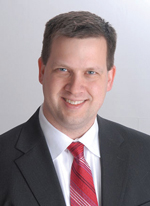September 01, 2021

In addition to potential injuries and property damage, traffic crashes can cause a lot of disruptions from making people late to work to delaying package delivery. A Mizzou Engineer is working with the Missouri State Highway Patrol (MSHP) to better understand when and where traffic accidents happen in hopes of minimizing those disruptions.
“I’m helping them build a crash forecasting system to get a sense of where crashes are likely to happen so they can better position resources and respond more effectively,” said Tim Matisziw, an associate professor of civil and environmental engineering and geography. “My research is in networks, how they can be disrupted and the implications of those disruptions. Traffic systems are a great example. It doesn’t take much to cause a disruption to a transportation system.”
 Matisziw is looking at the problem from multiple angles. First, he’s worked with the patrol to identify so-called accident hot spots, areas where crashes are common. He’s also analyzed trooper response times to determine why officers can or can’t get to a crash site quickly.
Matisziw is looking at the problem from multiple angles. First, he’s worked with the patrol to identify so-called accident hot spots, areas where crashes are common. He’s also analyzed trooper response times to determine why officers can or can’t get to a crash site quickly.
There are a lot of factors that go into both.
On the location side, Matisziw is using spatial statistics to identify clusters of accidents. These clusters can vary in size and shape, and they can change over time. For instance, the odds of a crash happening on some roads around Mizzou decrease in the summertime when students aren’t in town.
“We observed in some cases, clusters may grow in size,” he said. “For instance, the cluster starts out small in the spring but increases in the fall and then shrinks again in spring. In other cases, we observed that clustering corresponds with sporting events or commencement or any time you have large amounts of people coming in from out of town who are not familiar with an area.”
The highway patrol’s response times also vary for different reasons. Troopers responding to a crash in a county with a major interstate, for instance, are likely to get to an accident quicker than a trooper in a rural area limited to two-lane highways.
And Matisziw stresses that response times don’t always provide context. Someone might call the patrol after hitting a deer because they need a report for insurance purposes; but the situation doesn’t require immediate assistance. And MSHP is tasked with other, non-traffic related duties such as responding to crimes and missing person reports.
Once the research team and MSHP have a better understanding of where crashes happen and areas that seem more resilient to disruption, they can begin to develop more strategic solutions. Those could include more strategically partnering with other law enforcement agencies or giving troopers a better idea of when they should be stationed in higher-risk areas.
“We’re giving them a sense of where the resilience of the system seems to be the highest and most stable, and where they may need to invest more resources,” Matisziw said. “In some places with higher response times, it could be that there’s a need for more resources or better planning.”
Matisziw and co-authors published the research in Networks and Spatial Economics. He also has two recent papers around the work, including an article in Applied Network Science with co-author Ashkan Gholamialam, a PhD student in civil engineering. Another was published in July in Accident Analysis & Prevention with co-author and PhD student Muqdad Al Hamami.